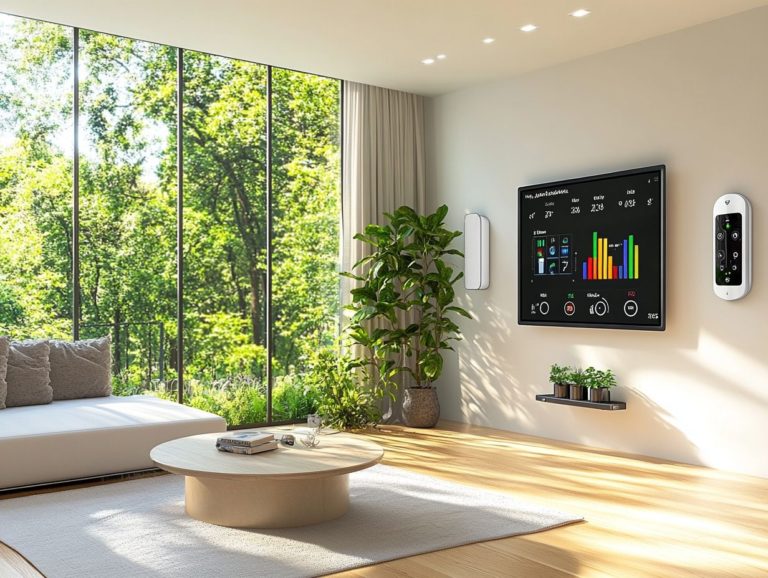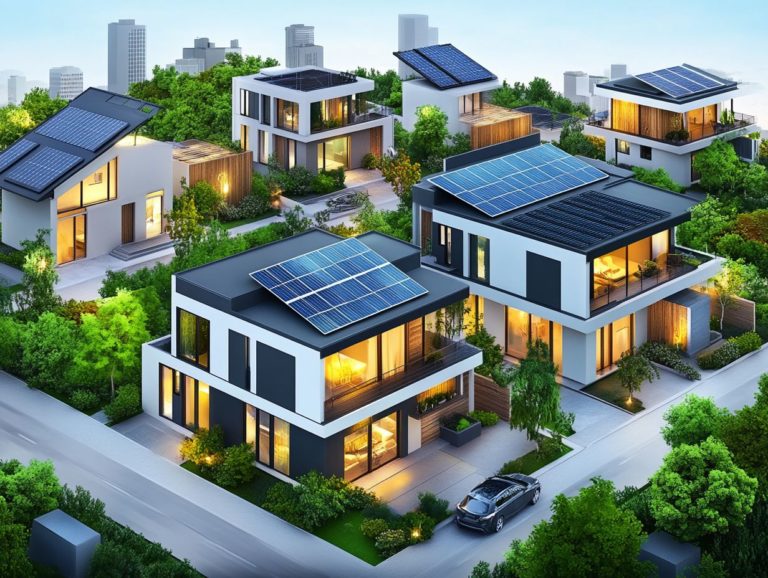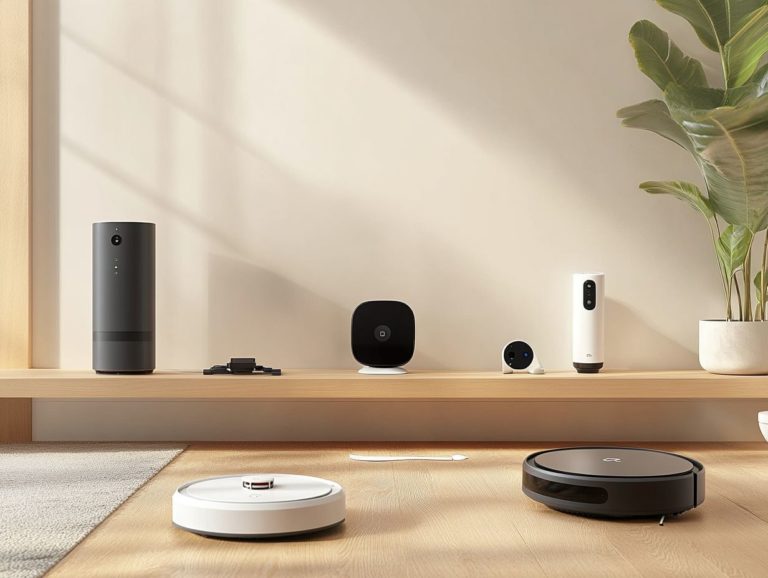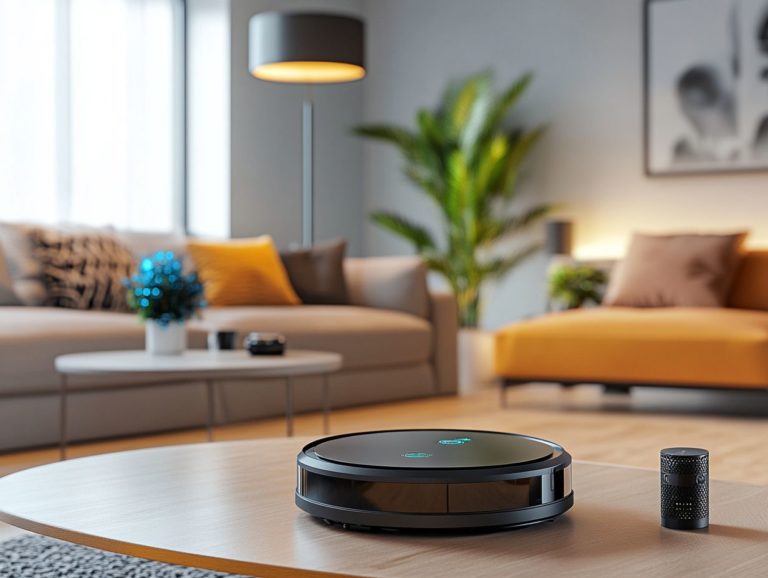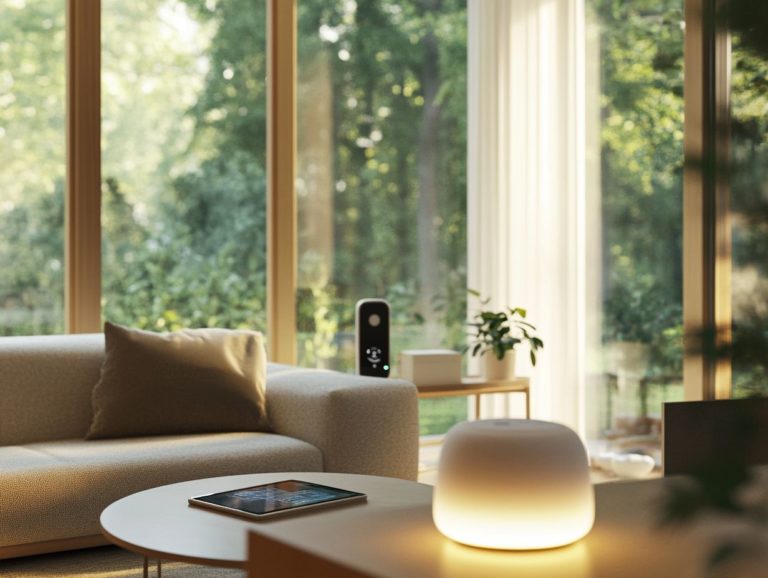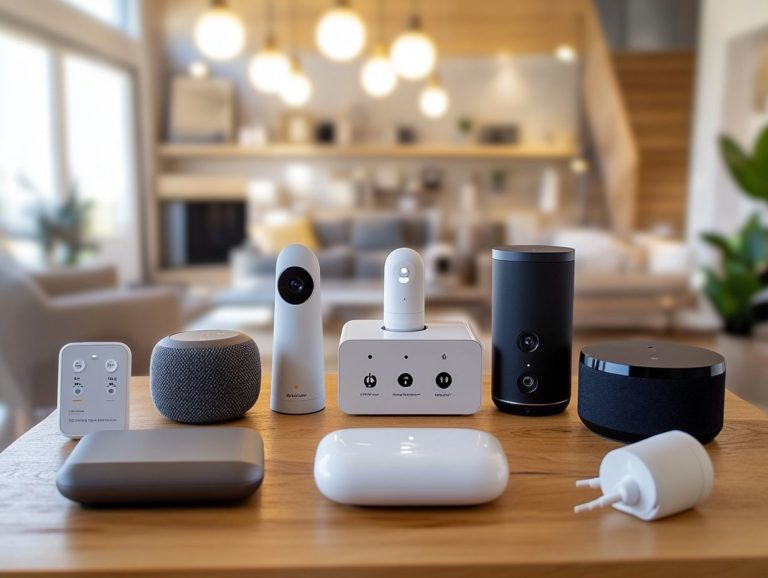How Smart Home Devices Improve Quality of Life
Smart home technology is changing how you live. It brings convenience, safety, and cost savings to your daily routines.
Imagine smart thermostats that adjust to your preferences. Picture lighting systems that set the perfect mood for every occasion. These devices are designed to make life easier, not just for luxury.
Before diving in, consider how these devices fit your lifestyle and protect your privacy.
Explore how these innovations can improve your life. Picture the exciting future of smart homes tailored just for you.
Contents
- Key Takeaways:
- Ways Smart Home Devices Enhance Quality of Life
- Popular Smart Home Devices and Their Features
- Considerations Before Investing in Smart Home Devices
- Future of Smart Home Technology
- Frequently Asked Questions
- What are smart home devices and how do they improve quality of life?
- How do smart home devices save time and increase convenience?
- How do smart home devices improve energy efficiency and save money?
- What are some examples of smart home devices that improve security and safety?
- Do smart home devices require a lot of technical knowledge to use?
- Can smart home devices be integrated with each other?
Key Takeaways:
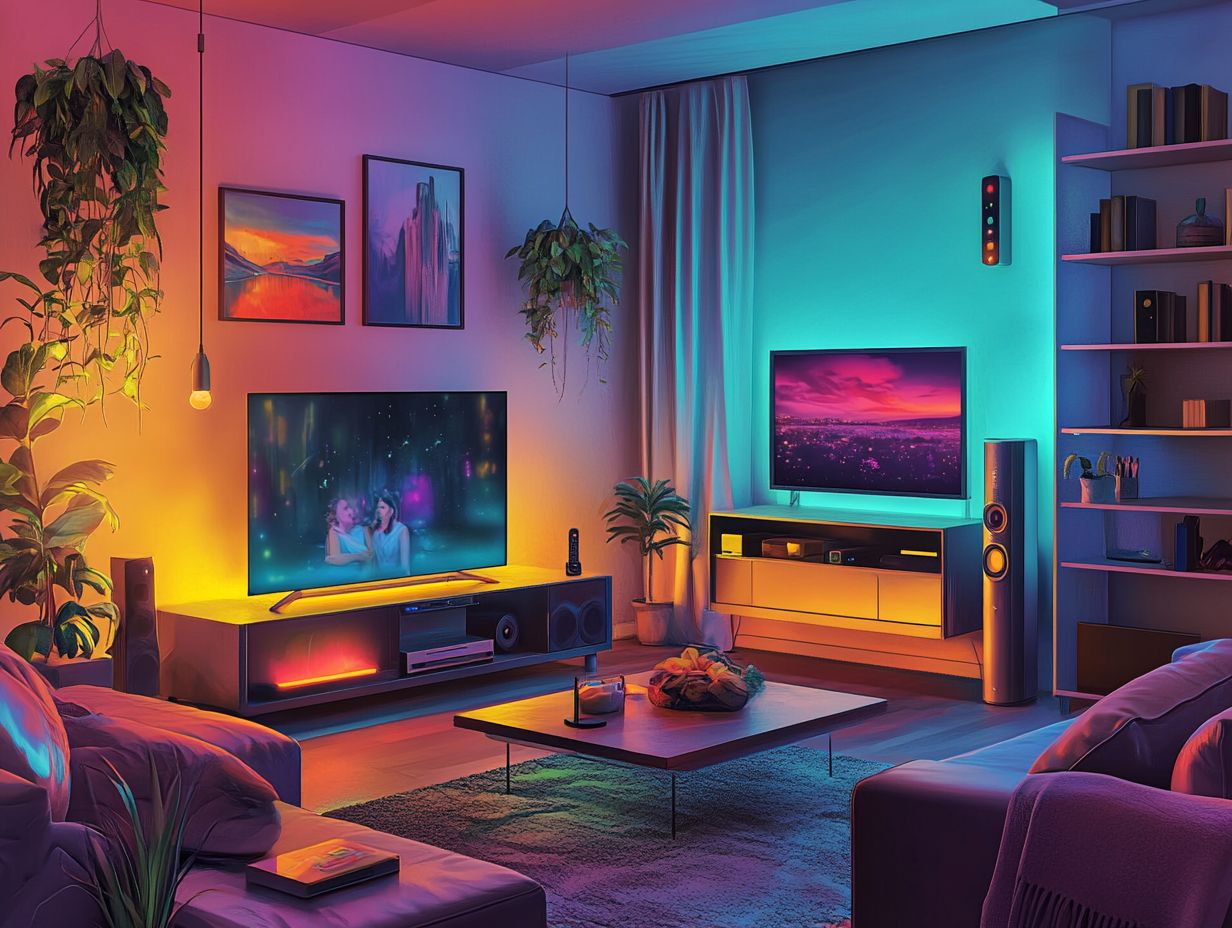
Smart home devices offer convenience and efficiency, saving you time and effort. Additionally, improved safety and security provide peace of mind. Investing in these devices can lead to significant cost savings by reducing energy use and increasing efficiency, as highlighted in the impact of smart homes on daily life.
Defining Smart Home Technology
Smart home technology includes automated systems and devices that make daily life better. They provide convenience, safety, and efficiency, but it’s important to consider the pros and cons of smart home devices.
With the Internet of Things (IoT), you can control your home from temperature to security using simple apps. This creates a living space that adapts to your needs, helping you age comfortably while staying independent.
Smart appliances make chores like cooking and laundry easy. You can manage these tasks using your smartphone or voice commands. Security cameras with motion detection give you peace of mind by keeping a constant watch over your property.
Energy-saving technologies help you manage power use, which lowers utility bills and supports the environment. Together, these features create a system that enhances your lifestyle and simplifies everyday tasks.
Ways Smart Home Devices Enhance Quality of Life
Smart home devices improve your daily life by integrating technology seamlessly. They offer advantages like efficiency, comfort, and convenience through smart home tech.
For active agers, these devices are essential for maintaining independence and managing health, especially for those with chronic conditions.
With health monitoring and medication reminders, you can create routines that fit your unique lifestyle.
Convenience and Efficiency
Convenience and efficiency are key benefits of smart home technology. They let you manage daily routines easily and cut down on energy use.
With smart appliances, you can control your environment effortlessly. Adjust the thermostat with your Amazon Echo Hub or schedule laundry to save energy.
This automation streamlines tasks and encourages a sustainable lifestyle. You can monitor everything from lighting to security cameras with one app, enhancing your experience.
Set routines, like dimming lights in the evening or activating your security system when you leave. This adaptability improves your comfort and promotes smart energy habits.
As technology advances, these solutions are becoming essential for modern living. They blend convenience with environmental responsibility.
Improved Safety and Security
Improved safety and security is likely a top concern for you as a homeowner. Smart home devices present innovative solutions tailored to meet those needs.
Smart locks, security cameras, and environmental sensors work together to establish a comprehensive security system, delivering you the peace of mind you deserve.
Features like fall detection and real-time monitoring are particularly advantageous for active agers. They enable caregivers to ensure their loved ones’ safety without encroaching on their independence.
These technologies not only deter potential intruders but also elevate your everyday living experience.
Imagine enjoying hassle-free keyless entry with smart locks! They allow seniors to bypass the hassle of traditional keys while providing temporary access to caregivers or family members when needed.
Meanwhile, high-definition security cameras deliver crystal-clear visuals, enabling family members to keep an eye on their loved ones’ activities and well-being from a distance.
Sensor-driven alerts for smoke, carbon monoxide, or unusual movement patterns can further enhance your secure living environment. They ensure that any potential issues are addressed swiftly and effectively.
Cost Savings

Cost savings represent a significant advantage when you embrace smart home technology. It allows you to optimize your energy consumption and trim those utility bills.
With automated systems at your disposal, settings can be adjusted intelligently based on real-time data. This results in efficient energy use across devices like thermostats and lighting systems.
This not only means financial savings for you but also encourages a more sustainable and eco-friendly lifestyle.
Take smart thermostats, for example. They learn when you’re home, adjusting heating and cooling only when necessary. This can cut your energy use significantly!
Then there’s smart lighting, which comes equipped with motion sensors. These automatically turn off lights in unoccupied rooms, preventing unnecessary expenditure.
Energy monitoring plugs offer insights into your power consumption, helping you spot the energy hogs and make informed decisions. By integrating these advanced devices, you can enjoy lowered bills while enhancing the overall efficiency of your living environment, making smart homes a financially savvy choice for you.
Popular Smart Home Devices and Their Features
Many popular smart home devices are revolutionizing how you manage your home, including how smart home technology enhances accessibility. They present unique features tailored to your modern needs.
Consider the Amazon Echo Hub, which acts as a central control panel for your smart home. It seamlessly integrates various systems and enables voice-activated commands.
Meanwhile, smart thermostats and lighting systems offer unparalleled convenience and energy efficiency.
These smart home assistants are essential in crafting an interconnected environment that elevates your daily routines to new heights.
Smart Thermostats
Smart thermostats play a crucial role in crafting energy-efficient homes. They intelligently adjust temperatures according to your preferences and habits.
These devices leverage machine learning techniques to adapt to your daily routines, providing optimal comfort while minimizing energy consumption.
With user-friendly interfaces, you can easily set schedules or adjust settings remotely. This amplifies the benefits of energy-saving technology.
Incorporating automated features like using your phone’s location to adjust settings when you leave or arrive home, these advanced systems can detect when you’re home or away, adjusting the temperature to prevent energy waste.
The integration of voice control and smartphone applications elevates your experience. It allows for effortless commands and adjustments without needing to lift a finger.
Many models come equipped with sensors that monitor humidity and air quality, offering additional insights that enhance your indoor comfort.
Consequently, smart thermostats not only bolster energy efficiency but also contribute to a healthier living environment, showcasing the multifaceted advantages of this innovative technology.
Explore these smart home devices today and take control of your comfort and savings!
Smart Lighting Systems
Want to brighten your home while saving energy? Smart lighting systems offer you a customizable and efficient way to illuminate your home, giving you control over brightness and color with just an app or a voice command.
These systems not only enhance your ambiance but also contribute to energy savings by adjusting light levels based on occupancy and the availability of natural light.
For active agers, the ability to automate lighting creates a safer and more accessible living environment. Integrating smart lighting into your home automation ecosystem can elevate both convenience and security.
Picture this: lights that automatically turn on when you enter a room or adjust according to the time of day, ensuring energy isn’t wasted during peak hours.
These advanced systems can also act as a deterrent for intruders, simulating occupancy with scheduled light patterns. Plus, many smart lighting options are compatible with various devices, allowing you seamless control from your smartphone or smart home hub.
This connection not only simplifies your daily routines but also enhances your overall quality of life, as detailed in the benefits of smart home appliances, making your home more responsive and secure.
Smart Home Assistants
Smart home assistants, like the Amazon Echo Hub, serve as your central control panels for managing a variety of smart devices with simple voice commands. These interactive devices enable you to access information, set reminders, and even manage telemedicine appointments, enhancing both ease of use and accessibility.
Their integration into your daily life not only simplifies tasks but also fosters a sense of independence, particularly for active agers. You should also consider privacy and security concerns, especially for devices that collect personal data or monitor your activities.
With the ability to connect seamlessly to multiple applications and devices, these smart assistants streamline everything from controlling your lighting to adjusting your thermostats, thereby enhancing comfort and energy efficiency.
They play an important part of health management, allowing you to monitor medical schedules and receive timely medication reminders. This hands-free approach significantly reduces the mental burden of managing daily activities, enabling you to focus on what truly matters your well-being and staying connected with loved ones.
Ultimately, these innovations are transforming the way technology supports your daily routines, making life not only easier but also more enriching.
Considerations Before Investing in Smart Home Devices
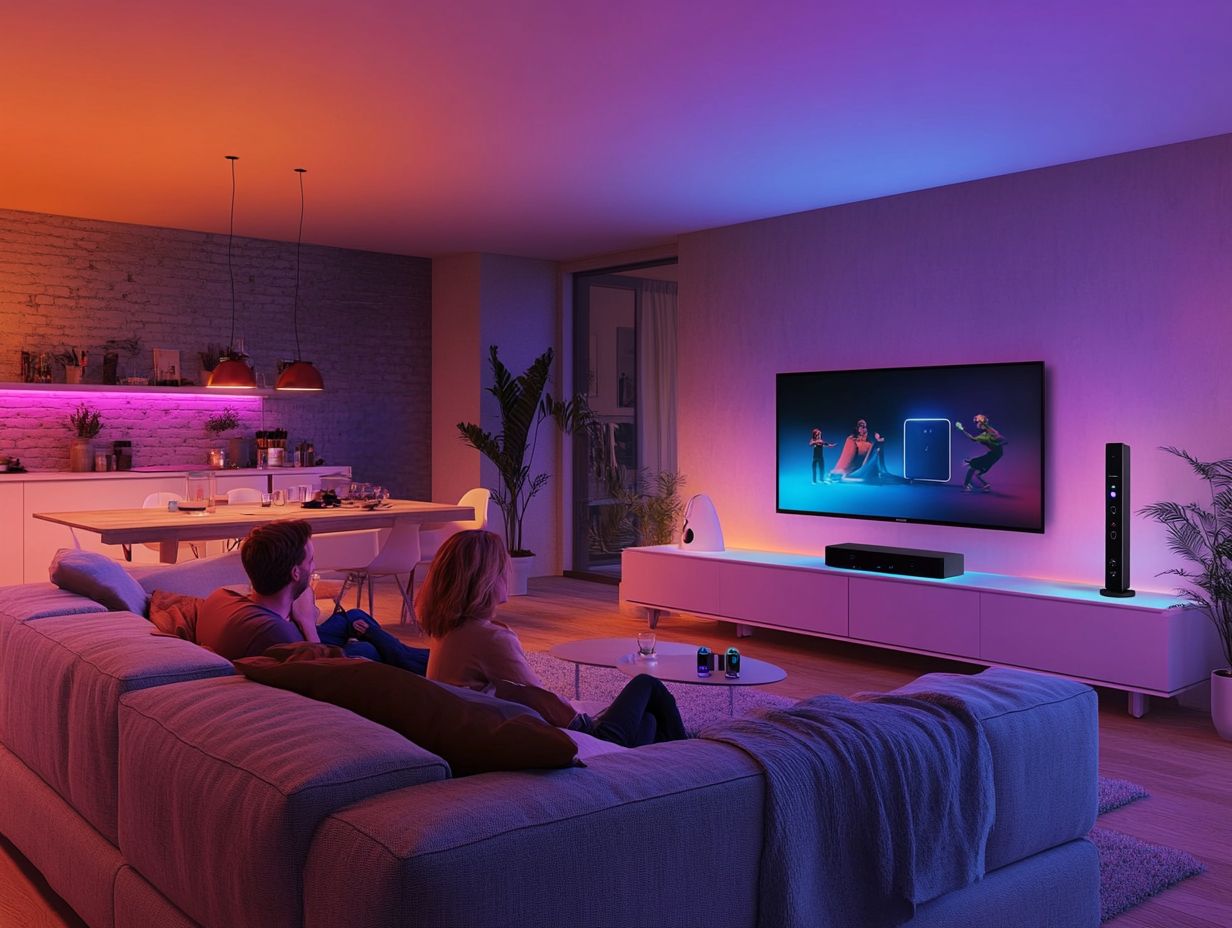
Before you invest in smart home devices, here are key factors to ensure the best investment for a seamless integration into your existing home systems.
Compatibility with your current technology is crucial, as not all devices play nicely together. You should also consider privacy and security concerns, particularly for devices that collect personal data or monitor your activities.
By understanding these factors, you can pave the way for successful technology adoption in your home.
Compatibility and Integration
Compatibility stands as a cornerstone of smart home technology, as successful automation hinges on the ability of various devices to work together harmoniously.
With different smart home protocols at play, it’s essential for you to select user-friendly devices that seamlessly connect with your existing systems. This thoughtful strategy paves the way for a more cohesive smart home experience.
Amid the multitude of options available, grasping how these protocols function becomes vital in ensuring effective communication among all components:
- Wi-Fi: A common wireless technology.
- Zigbee: A low-power, low-data rate wireless standard.
- Z-Wave: A wireless communication protocol for smart home devices.
A well-integrated system not only elevates convenience but also enhances energy efficiency and security, enabling you with real-time monitoring and control.
By carefully choosing the right combination of devices, you can tailor the experience to your unique preferences and lifestyle, ultimately enriching your overall interaction with your smart home.
In this constantly evolving landscape, prioritizing compatibility is essential for unlocking the full potential of automated systems and embracing a more connected home environment.
Privacy and Security Concerns
Privacy and security concerns take center stage when you’re considering smart home devices. Many of these technologies collect sensitive data that can be susceptible to breaches. Grasping the implications of data protection and implementing robust security measures can significantly mitigate risks.
For caregivers, the ability to monitor loved ones without compromising their privacy introduces an added layer of complexity to the decision-making process. As you increasingly turn to connected devices for convenience and efficiency, it’s crucial to stay informed about the potential pitfalls linked with these smart technologies.
Engaging in proactive measures, such as changing default passwords and enabling two-factor authentication, is essential for protecting your devices from unauthorized access. Regularly updating your software and firmware is a must to stay secure and patch vulnerabilities. Take the time to carefully review the privacy settings of your devices.
By being diligent and taking ownership of your digital footprint, you can enjoy the many benefits of smart home technology while significantly reducing the risk of data exposure.
Future of Smart Home Technology
The future of smart home devices to enhance your living space is poised to offer remarkable advancements that will elevate your quality of life, especially if you’re among active agers or managing chronic diseases.
With innovations in AI and machine learning, devices will learn and adapt to your unique preferences, paving the way for truly personalized healthcare solutions. Enhancements in mobility assistance technology will help you maintain your independence, ensuring that you can navigate your environment with confidence and ease.
Predicted Advancements and Impact on Quality of Life
Predicted advancements in smart technologies are poised to significantly enhance your quality of life, especially if you’re elderly or in need of caregiver support. Innovations like advanced health monitoring and automated systems will enable you to maintain your independence while providing real-time monitoring and fall detection. Exploring the benefits of smart home automation can help you enjoy autonomy without compromising your safety.
The integration of artificial intelligence and machine learning into smart home devices will personalize your experience and adapt your environment to meet your unique needs. For instance, exploring smart home devices for improved sleep can enhance your rest, while voice-activated assistants can remind you about medication schedules and facilitate communication with family or caregivers, reinforcing those vital social connections that promote your mental well-being.
Energy-efficient smart appliances will not only make daily tasks easier but also encourage sustainable living practices, giving you greater control over your surroundings. As these technologies continue to evolve, they promise to transform caregiving dynamics, creating a more harmonious and independent lifestyle for both caregivers and those they support.
Frequently Asked Questions
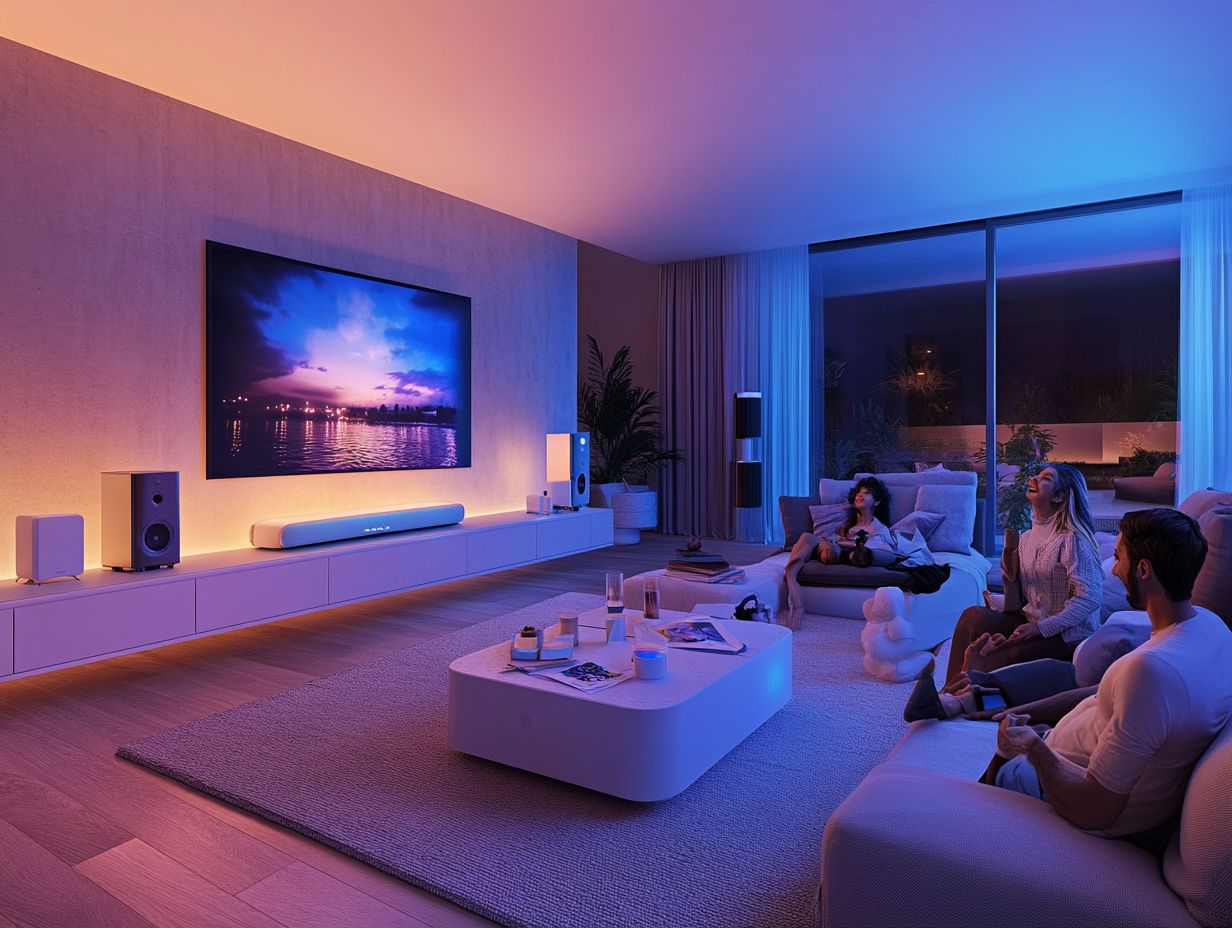
What are smart home devices and how do they improve quality of life?
Smart home devices are electronic devices that can be controlled remotely through a smartphone or other wireless device. They improve quality of life by automating tasks, increasing convenience, and enhancing security and safety in the home, showcasing how smart home tech is changing family life.
How do smart home devices save time and increase convenience?
Smart home devices can be programmed to perform tasks automatically, freeing up time for homeowners. For example, a smart thermostat can adjust the temperature at certain times of day, and a smart vacuum can clean on a schedule. Additionally, many devices can be controlled with voice commands, making it easier and faster to complete everyday tasks.
How do smart home devices improve energy efficiency and save money?
Smart home devices can monitor and regulate energy usage, resulting in lower energy bills. For instance, smart thermostats can adjust the temperature according to occupancy and weather conditions, and smart lighting systems can turn off lights when a room is not in use. This leads to a more energy-efficient home and cost savings on utility bills.
What are some examples of smart home devices that improve security and safety?
Smart home devices like door locks, security cameras, and motion sensors connect to a central system. You can control them remotely, monitor your home, and receive alerts for any suspicious activity.
These devices let you grant access to visitors from anywhere, adding extra security to your home.
Do smart home devices require a lot of technical knowledge to use?
No, most smart home devices are user-friendly. They come with simple instructions and can be set up in just a few minutes.
You ll love that most devices include easy-to-use apps, making control a breeze!
Can smart home devices be integrated with each other?
Absolutely! Many smart home devices connect and work together through a central device. For example, a smart thermostat can adjust your lighting based on the room temperature.

